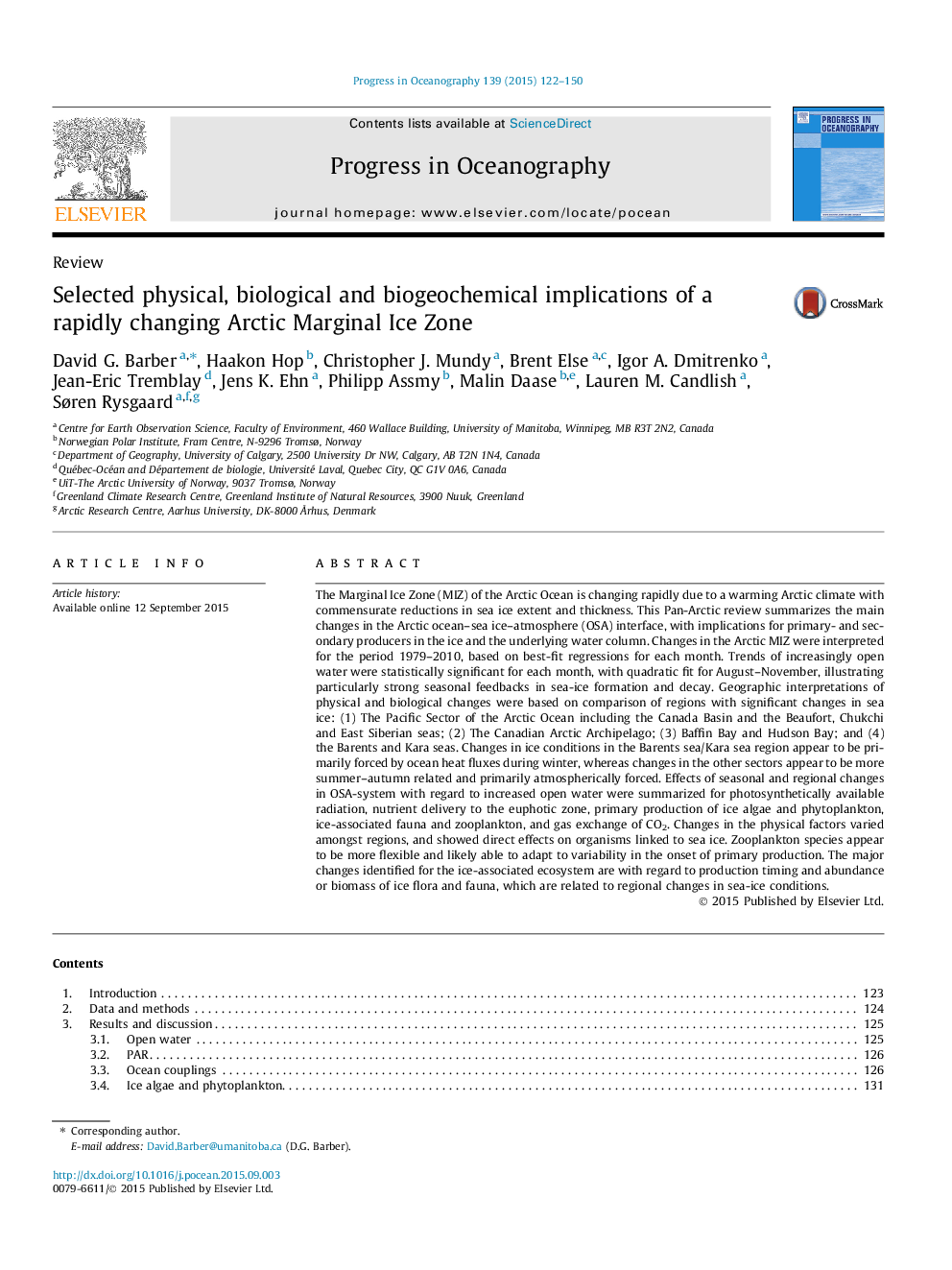| کد مقاله | کد نشریه | سال انتشار | مقاله انگلیسی | نسخه تمام متن |
|---|---|---|---|---|
| 6388437 | 1627919 | 2015 | 29 صفحه PDF | دانلود رایگان |
عنوان انگلیسی مقاله ISI
Selected physical, biological and biogeochemical implications of a rapidly changing Arctic Marginal Ice Zone
ترجمه فارسی عنوان
خواص فیزیکی، بیولوژیکی و بیوگرافی شیمیایی مناطق یخ زده حاشیه ای که به سرعت در حال تغییر هستند را نشان می دهد
دانلود مقاله + سفارش ترجمه
دانلود مقاله ISI انگلیسی
رایگان برای ایرانیان
موضوعات مرتبط
مهندسی و علوم پایه
علوم زمین و سیارات
زمین شناسی
چکیده انگلیسی
The Marginal Ice Zone (MIZ) of the Arctic Ocean is changing rapidly due to a warming Arctic climate with commensurate reductions in sea ice extent and thickness. This Pan-Arctic review summarizes the main changes in the Arctic ocean-sea ice-atmosphere (OSA) interface, with implications for primary- and secondary producers in the ice and the underlying water column. Changes in the Arctic MIZ were interpreted for the period 1979-2010, based on best-fit regressions for each month. Trends of increasingly open water were statistically significant for each month, with quadratic fit for August-November, illustrating particularly strong seasonal feedbacks in sea-ice formation and decay. Geographic interpretations of physical and biological changes were based on comparison of regions with significant changes in sea ice: (1) The Pacific Sector of the Arctic Ocean including the Canada Basin and the Beaufort, Chukchi and East Siberian seas; (2) The Canadian Arctic Archipelago; (3) Baffin Bay and Hudson Bay; and (4) the Barents and Kara seas. Changes in ice conditions in the Barents sea/Kara sea region appear to be primarily forced by ocean heat fluxes during winter, whereas changes in the other sectors appear to be more summer-autumn related and primarily atmospherically forced. Effects of seasonal and regional changes in OSA-system with regard to increased open water were summarized for photosynthetically available radiation, nutrient delivery to the euphotic zone, primary production of ice algae and phytoplankton, ice-associated fauna and zooplankton, and gas exchange of CO2. Changes in the physical factors varied amongst regions, and showed direct effects on organisms linked to sea ice. Zooplankton species appear to be more flexible and likely able to adapt to variability in the onset of primary production. The major changes identified for the ice-associated ecosystem are with regard to production timing and abundance or biomass of ice flora and fauna, which are related to regional changes in sea-ice conditions.
ناشر
Database: Elsevier - ScienceDirect (ساینس دایرکت)
Journal: Progress in Oceanography - Volume 139, December 2015, Pages 122-150
Journal: Progress in Oceanography - Volume 139, December 2015, Pages 122-150
نویسندگان
David G. Barber, Haakon Hop, Christopher J. Mundy, Brent Else, Igor A. Dmitrenko, Jean-Eric Tremblay, Jens K. Ehn, Philipp Assmy, Malin Daase, Lauren M. Candlish, Søren Rysgaard,
